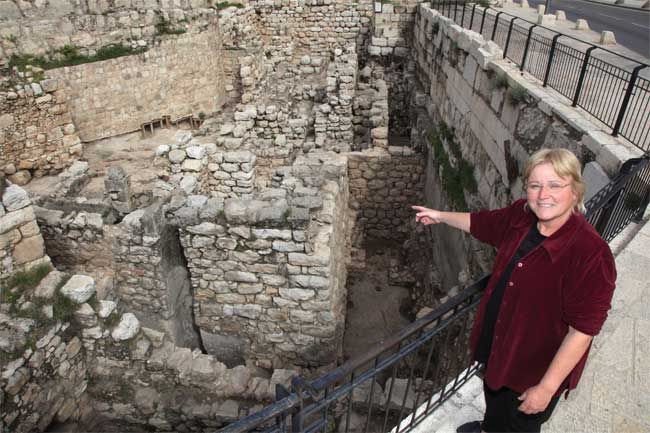Ancient Wall Possibly Built by King Solomon

A section of an ancient city wall of Jerusalem from the tenth century B.C.E. (between 1000 BC and 901 BC), possibly built by King Solomon, has been revealed in archaeological excavations.
The section of wall, about 230 feet long (70 meters) and 19 feet (6 meters) high, is located in the area known as the Ophel, between the City of David and the southern wall of the Temple Mount in Jerusalem.
Found in the city wall complex: an inner gatehouse for access into the royal quarter of the city; a royal structure adjacent to the gatehouse; and a corner tower that overlooks a substantial section of the adjacent Kidron valley.
"The city wall that has been uncovered testifies to a ruling presence,” said Eilat Mazar, a researcher at Hebrew University of Jerusalem. “Its strength and form of construction indicate a high level of engineering."
Comparison of the new findings with city walls and gates from the period of King Solomon, such as the First Temple, as well as pottery found at the site, enable the researchers to postulate that the wall was built by Solomon in Jerusalem in the latter part of the tenth century B.C.E., Mazar said.
"This is the first time that a structure from that time has been found that may correlate with written descriptions of Solomon's building in Jerusalem," she said. "The Bible tells us that Solomon built, with the assistance of the Phoenicians, who were outstanding builders, the [First] Temple and his new palace and surrounded them with a city, most probably connected to the more ancient wall of the City of David."
Mazar specifically cites the third chapter of the First Books of Kings where it refers to "until he (Solomon) had made an end of building his own house, and the house of the Lord, and the wall of Jerusalem round about."
Sign up for the Live Science daily newsletter now
Get the world’s most fascinating discoveries delivered straight to your inbox.
The 19-foot-high (6 meter) gatehouse is built in a style typical of those from the period of the First Temple. It has symmetrical plan of four identical small rooms, two on each side of the main passageway. Also there was a large, adjacent tower, covering an area of 79 by 59 feet (24 by 18 meters), which was intended to serve as a watchtower to protect entry to the city. The tower is located today under the nearby road and still needs to be excavated. Nineteenth century British surveyor Charles Warren, who conducted an underground survey in the area, first described the outline of the large tower in 1867 but without attributing it to the era of Solomon.
"Part of the city wall complex served as commercial space and part as security stations," Mazar explained. Within the courtyard of the large tower there were widespread public activities, she said. It served as a public meeting ground, as a place for conducting commercial activities and cult activities, and as a location for economic and legal activities.
Pottery shards discovered within the fill of the lowest floor of the royal building near the gatehouse also testify to the dating of the complex to the 10th century B.C.E. Found on the floor were remnants of large storage jars, 3.7 feet (1.15 meters) in height, that survived destruction by fire and that were found in rooms that apparently served as storage areas on the ground floor of the building. On one of the jars there is a partial inscription in ancient Hebrew indicating it belonged to a high-level government official.
"The jars that were found are the largest ever found in Jerusalem," Mazar said.
Cult figurines were also found in the area, as were seal impressions on jar handles with the word "to the king," testifying to their usage within the monarchy. Also found were seal impressions (bullae) with Hebrew names, also indicating the royal nature of the structure. Most of the tiny fragments uncovered came from intricate wet sifting.
Between the large tower at the city gate and the royal building the archaeologists uncovered a section of the corner tower that is eight meters in length and six meters high. The tower was built of carved stones of unusual beauty.
East of the royal building, another section of the city wall that extends for some 115 feet (35 meters) also was revealed. This section is five meters high, and is part of the wall that continues to the northeast and once enclosed the Ophel area.
The excavations were carried out over a three-month period with funding provided by Daniel Mintz and Meredith Berkman, a New York couple interested in Biblical Archeology. Archaeology students from the Hebrew University of Jerusalem as well as volunteer students from the Herbert W. Armstrong College in Edmond, Oklahoma, and hired workers all participated in the excavation work.
- History's Most Overlooked Myseries
- Image Gallery: The Seven Ancient Wonders of the World
- What Killed King Tut












